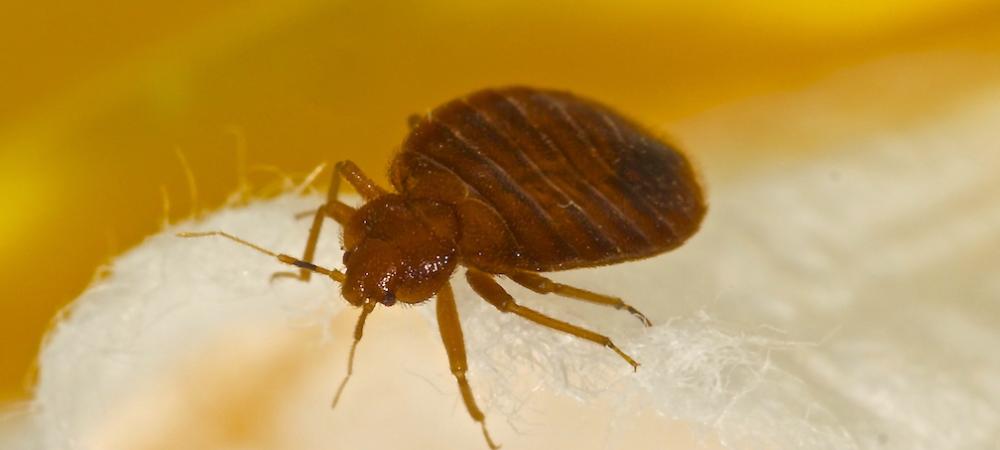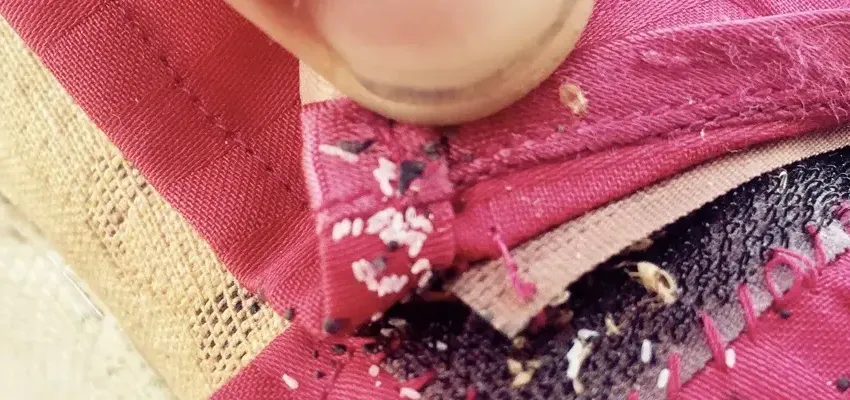How Do I Know If I Have Bed Bugs?

If you’ve recently noticed unusual bites, a faint musty odor, or tiny reddish-brown spots on your sheets, you may be dealing with an unwelcome guest: bed bugs. These tiny, elusive pests are known for their ability to hitch a ride into homes on luggage, furniture, and clothing. If you’re living in Virginia or West Virginia, where tourism, outdoor activities, and travel are a part of everyday life, it’s important to be vigilant. Here’s everything you need to know to identify bed bugs and understand the signs of an infestation.
What Are Bed Bugs?
Bed bugs (Cimex lectularius) are small, reddish-brown insects that feed on the blood of humans and animals. While they don’t transmit diseases, their bites can lead to itchy, uncomfortable welts. Bed bugs are most active at night when they emerge to feed, making it difficult to catch them in the act.
These pests are about the size of an apple seed, measuring roughly 1/4 inch long, and they can hide in tiny cracks and crevices. Bed bugs are nocturnal creatures, preferring to stay hidden during the day and come out to feed at night.
Are Bed Bugs Dangerous?
Bed bugs are not considered dangerous in terms of transmitting diseases. Unlike mosquitoes or ticks, bed bugs do not carry or spread infections. However, their bites can lead to discomfort, sleep disruption, and secondary skin infections due to excessive scratching. In some cases, people with allergic reactions to bed bug bites may require medical attention, but this is rare.
The main danger of bed bugs is their ability to cause psychological stress and anxiety, as their presence can create a feeling of unsanitary conditions in the home. If left unchecked, bed bugs can spread throughout your home and cause an infestation that becomes difficult to control.
How Quickly Do Bed Bugs Spread?
Bed bugs can spread rapidly in a home once they’ve established an infestation. Here’s how fast they can multiply:
- Reproduction: Bed bugs can spread surprisingly fast once they establish themselves in a home. A single female bed bug can lay up to 5 eggs per day, and the eggs typically hatch in 6 to 10 days. The bed bugs reach maturity within a month and begin reproducing, leading to an exponential increase in their population.
- Spread Through Homes: Bed bugs are excellent at hiding in cracks and crevices, which makes them difficult to detect early on. They can spread through homes by traveling on clothing, luggage, furniture, or even visitors. Since bed bugs can live for several months without feeding, they can also be transported long distances without being noticed.
The spread of bed bugs can be slowed or stopped with early detection, but once an infestation is established, it may take several weeks or months to fully eliminate them, depending on the size of the problem and the treatment methods used. Professional bed bug control services are the most effective way to address bed bug infestations and prevent them from spreading throughout your home.
What Do Bed Bug Bites Look Like?
Bed bug bites are a telltale sign of an infestation. Here’s how to recognize them:
- Appearance: Bed bug bites typically appear as small, red, itchy bumps on the skin and are often grouped together in a line or cluster.
- Common Locations: Bites most commonly found on areas of the body that are exposed during sleep, such as the arms, legs, face, neck, or hands.
- Itchiness: The bites are usually painless at first but can become itchy and inflamed over time.
- Allergic Reactions: In some people, bed bug bites may cause an allergic reaction, resulting in swelling, blistering, or more severe allergic reactions.
- Delayed Reaction: Some people may not notice bed bug bites immediately, as the bites can take hours or even days to show symptoms.
- No Reaction: Some individuals may not react to bed bug bites at all, making them harder to identify.
It’s important to note that bites alone may not always confirm a bed bug infestation, as other insects like fleas or mosquitoes can cause similar reactions.
What Do Bed Bugs Look Like?
Knowing what bed bugs look like is crucial for identifying an infestation. Here's a closer look at these sneaky critters:
- Adults: Adult bed bugs are flat and oval-shaped, about the size of a lentil (around 1/4 inch long). They are reddish-brown before feeding and become more elongated and darker after feeding.
- Nymphs: Bed bug nymphs (immature bugs) are smaller, translucent, and white or light yellow. They grow into adults after several molts.
- Eggs: Bed bug eggs are about the size of a pinhead, white, and difficult to see with the naked eye. They are often laid in hidden areas like cracks in walls or bed frames.
When Are Bed Bugs Active?
Bed bugs are primarily nocturnal, meaning they are most active at night. They tend to come out of hiding during the evening and early morning hours to feed on the blood of humans and animals while they sleep. Bed bugs are attracted to warmth and carbon dioxide, which is why they tend to feed when their host is lying still and asleep. This nocturnal behavior makes it difficult to detect bed bugs during the day, as they remain hidden in cracks and crevices during daylight hours.
However, while bed bugs are most active at night, they are not exclusively active during these hours. In cases of heavy infestation, bed bugs may be seen moving around during the day, especially if they are searching for food. If their hiding places are disturbed or if they are desperate for a blood meal, they may venture out even in daylight.
Where Do Bed Bugs Hide?
Bed bugs are experts at hiding, which makes them difficult to spot until an infestation becomes severe. They seek out dark, tight spaces where they can stay undisturbed during the day and emerge at night to feed. In Virginia and West Virginia homes, bed bugs can be found in the following common hiding spots:
- Mattresses and Box Springs: The seams, folds, and corners of mattresses and box springs are prime hiding spots for bed bugs. They often nestle in the small cracks and crevices where the fabric meets the frame, making it easy for them to stay hidden while they feed.
- Upholstered Furniture: Sofas, armchairs, and other upholstered furniture are ideal places for bed bugs to hide. Check the seams, cushions, and underneath the furniture for any signs of bed bugs. They may also hide in cracks in the wooden frame or behind loose upholstery.
- Baseboards and Walls: Bed bugs are known to hide in the tiny cracks and crevices in baseboards and walls. They can also make their way into the spaces behind electrical outlets or along the edges of carpeting.
- Cracks in the Floor or Walls: Bed bugs can squeeze into even the tiniest cracks in the flooring or walls. These hidden spots provide them with a safe haven where they can reproduce and stay undisturbed during the day.
- Behind Picture Frames and Wall Hangings: Bed bugs love to hide behind picture frames, mirrors, and other wall hangings, especially if there are cracks or gaps where they can tuck themselves away. It’s worth checking these areas carefully, especially if you notice signs of bites but can’t pinpoint the source.
- Luggage and Bags: Bed bugs are often transported from place to place in luggage or bags, especially if you’ve recently traveled. They can hide in the zippers, seams, or linings of your luggage and spread to other parts of your home when you unpack.
- Electronics and Appliances: Bed bugs can even find their way into small spaces in electronics such as televisions, radios, and alarm clocks. They may also nest in the cracks around power outlets or behind appliances like refrigerators or microwave ovens.
- Wooden Furniture and Cracks in the Walls: Bed bugs can hide in wooden furniture, particularly around the joints and seams. They may also find their way into cracks in the walls, behind wallpaper, or in the gaps of wooden trim.

Most Common Signs of Bed Bug Infestations
If you suspect a bed bug infestation in your home, it’s important to be able to identify the signs early to prevent the problem from spreading. Bed bugs are skilled at hiding and often come out at night, so detection can be tricky. Here are the most common signs that you may have a bed bug problem:
1. Bites and Welts on Your Skin
One of the most noticeable signs of a bed bug infestation is waking up with bites. These bites often appear in clusters or lines and are typically red, itchy, and swollen. The bites are most commonly found on exposed areas of skin such as your arms, legs, neck, and face. In some people, the bites may not cause a noticeable reaction, while others may develop allergic reactions or infections from scratching.
2. Fecal Stains on Bedding and Furniture
Bed bugs excrete small, dark, rust-colored spots after feeding, which can be found on your sheets, mattresses, or furniture. These fecal stains are a clear indication that bed bugs are present and feeding regularly. If you spot these marks, it’s important to inspect the area closely for other signs of an infestation.
3. Blood Stains on Bedding or Furniture
Another common sign of bed bugs is small blood spots on your sheets, pillowcases, or furniture. These occur when the bed bug is crushed or when it leaves behind blood after feeding. If you notice blood stains, it's a strong indicator that bed bugs have been feeding on you while you sleep.
4. Musty Odor
In larger infestations, bed bugs can release a distinctive musty odor, often described as sweet or moldy. This smell comes from the scent glands of the bed bugs and is more noticeable when there are a significant number of them. If your bedroom or other living areas start to develop an unusual odor, it may be time to check for bed bugs.
5. Shed Skins and Eggs
As bed bugs mature, they shed their outer skins (exoskeletons) during each stage of development. These shed skins are often left in hidden areas such as the seams of mattresses, behind headboards, or along baseboards. Similarly, bed bug eggs are tiny and white, often found in clusters in cracks and crevices. Finding these skins or eggs can help you confirm an infestation.
6. Live Bed Bugs
Seeing live bed bugs is a clear sign of an infestation. Adult bed bugs are about the size of an apple seed and can be found in the cracks of furniture, the seams of mattresses, or behind baseboards. Nymphs (immature bed bugs) are smaller and lighter in color, but they still look similar to adult bed bugs. If you spot live bugs, it's crucial to take immediate action to address the problem.
7. Unexplained Scratching or Restlessness While Sleeping
Some people may begin to feel discomfort or experience restless nights due to the presence of bed bugs. Constant scratching, a feeling of irritation or anxiety during sleep, or waking up with a sense of "something isn't right" could be signs that you're being bitten by bed bugs while you sleep.

What to Do If You Think You Have Bed Bugs
If you suspect that you have bed bugs in your home, it’s important to act quickly and carefully. Bed bugs can multiply rapidly, and the longer you wait, the more difficult and costly the removal process can become. Here are the steps you should take if you think you have bed bugs:
1. Confirm the Infestation
First, try to confirm whether you truly have bed bugs. Look for signs such as bites on your skin, bloodstains or dark spots on your bedding, shed skins, or even live bed bugs in cracks and crevices around your home. Thoroughly inspect areas like mattresses, box springs, upholstered furniture, and baseboards—bed bugs often hide in small, dark places during the day.
2. Clean and Isolate Affected Areas
If you confirm that you have bed bugs, start by isolating the affected areas. Remove all bedding, clothing, and personal items, and wash them in hot water to kill any bed bugs and eggs. Use a dryer on high heat to dry the items completely. Vacuum the floors, furniture, and baseboards thoroughly to remove visible bed bugs and eggs. Be sure to dispose of the vacuum bag or empty the vacuum canister in a sealed plastic bag to prevent any bugs from escaping.
While cleaning can help reduce the number of bed bugs, it is unlikely to completely eliminate the infestation. Professional intervention is often necessary for complete removal.
3. Avoid Spreading the Infestation
It’s important not to move items from the infested areas to other parts of your home, as this could spread the bed bugs to other rooms. Avoid sitting or lying on furniture that has been infested, as this can lead to bed bugs spreading on your clothes or body.
4. Contact a Professional Pest Control Company
Bed bug infestations are difficult to manage on your own, and DIY treatments are often ineffective. Bed bugs are resilient pests that require a professional, targeted approach to ensure their complete removal.
Why You Need Professional Bed Bug Treatments:
- Expert Detection: Pest control professionals have the experience and tools to conduct a thorough inspection of your home and identify all possible hiding spots. Bed bugs can be difficult to locate without the right knowledge, and professionals can ensure that no areas are missed.
- Targeted Treatment: Effective bed bug removal requires specialized treatments that go beyond just spraying chemicals. Professional pest control companies use integrated pest management (IPM) techniques, including heat treatments, steam, and insecticides, to target the infestation at every stage of the bed bug life cycle.
- Safe and Effective Solutions: Many over-the-counter products can be ineffective or even harmful if not used correctly. Pest control experts use safe, tested, and proven methods to remove bed bugs from your home while minimizing risks to your family and pets.
- Prevention of Future Infestations: A professional pest control service doesn’t just eliminate the current infestation; they also provide advice and recommendations on how to prevent bed bugs from returning. This may include sealing cracks and crevices, monitoring your home for signs of future infestations, and taking proactive measures during travel.
- Peace of Mind: Bed bugs can cause a lot of stress and discomfort, and knowing that professionals are handling the situation gives you peace of mind. Pest control specialists are trained to deal with these pests efficiently and discreetly, restoring your home to a safe, comfortable place.
If you suspect that your home in Virginia or West Virginia has a bed bug problem, don't wait to take action. Contact your local pest control company today to schedule an inspection and take the first step toward getting rid of bed bugs for good.
